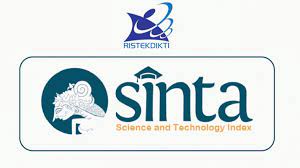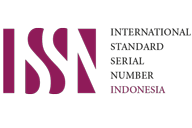Aplikasi GAI dan UAVs Untuk Analisis Korelasi Kepadatan Permukiman dan LST di Pulau Panggang DKI Jakarta
Kata Kunci:
Geographic Artifical Intelligence, Surface Temperature, Unmanned Aerial Vehicles, Pulau PanggangAbstrak
Penelitian ini bertujuan untuk memahami hubungan antara kepadatan permukiman yang tinggi dan suhu permukaan tanah yang terkait dengan fenomena Urban Heat Island (UHI). Metode pengolahan data melibatkan pengumpulan data kepadatan permukiman menggunakan UAVs yang dilengkapi dengan sensor termal, serta penggunaan GAI yakni GEE untuk menganalisis LST di Pulau Panggang. Hasil penelitian menunjukkan adanya hubungan positif antara kepadatan permukiman dan LST di Pulau Panggang, dengan kepadatan permukiman yang tinggi berkontribusi pada peningkatan suhu permukaan tanah. Manfaat dari aplikasi GAI dan UAVs dalam analisis ini meliputi pemetaan yang akurat, pemahaman dampak urbanisasi, perencanaan perkotaan yang berkelanjutan, dan pengambilan keputusan berdasarkan fakta. Diharapkan penelitian ini dapat memberikan kontribusi dalam pengelolaan perkotaan yang lebih baik dan pengurangan dampak lingkungan di Pulau Panggang, DKI Jakarta.
Unduhan
Referensi
Bordogna, Gloria, and Cristiano Fugazza. 2022. “Artificial Intelligence for Multisource Geospatial Information.” ISPRS International Journal of Geo-Information 12(1): 10. https://www.mdpi.com/2220-9964/12/1/10.
Çolak, Emre, and Filiz Sunar. 2023. “Investigating the Usefulness of Satellite-Retrieved Land Surface Temperature (LST) in Pre- and Post-Fire Spatial Analysis.” Earth Science Informatics 16(1): 945–63. https://link.springer.com/10.1007/s12145-022-00883-8.
Diksha, Maya Kumari, and Rina Kumari. 2023. “Spatiotemporal Characterization of Land Surface Temperature in Relation Landuse/Cover: A Spatial Autocorrelation Approach.” Journal of Landscape Ecology. https://www.sciendo.com/article/10.2478/jlecol-2023-0001.
Ermida, Sofia L. et al. 2020. “Google Earth Engine Open-Source Code for Land Surface Temperature Estimation from the Landsat Series.” Remote Sensing 12(9): 1471. https://www.mdpi.com/2072-4292/12/9/1471.
Fonseka, H.P.U. et al. 2019. “Urbanization and Its Impacts on Land Surface Temperature in Colombo Metropolitan Area, Sri Lanka, from 1988 to 2016.” Remote Sensing 11(8): 957. https://www.mdpi.com/2072-4292/11/8/957.
Hehanussa, F. S., Sumunar, D. R. S., & Rakuasa, H. 2023. “Pemanfaatan Geogle Earth Engine Untuk Identifikasi Perubahan Suhu Permukaan Daratan Kabupaten Buru Selatan Berbasis Cloud Computing.” Gudang Jurnal Multidisiplin Ilmu 1(1): 37–45.
How Jin Aik, Darren, Mohd Hasmadi Ismail, Farrah Melissa Muharam, and Mohamad Azani Alias. 2021. “Evaluating the Impacts of Land Use/Land Cover Changes across Topography against Land Surface Temperature in Cameron Highlands” ed. Jun Yang. PLOS ONE 16(5): e0252111. https://dx.plos.org/10.1371/journal.pone.0252111.
Latue, P. C., Rakuasa, H., Somae, G., & Muin, A. 2023. “Analisis Perubahan Suhu Permukaan Daratan Di Kabupaten Seram Bagian Barat Menggunakan Platform Berbasis Cloud Google Earth Engine.” Sudo Jurnal Teknik Informatika 2(2): 45–51.
Latue, P. C., Septory, J. S. I., & Rakuasa, H. 2023. “Perubahan Tutupan Lahan Kota Ambon Tahun 2015, 2019 Dan 2023.” JPG (Jurnal Pendidikan Geografi) 10(1): 177–86.
Neog, Rituraj. 2022. “Evaluation of Temporal Dynamics of Land Use and Land Surface Temperature (LST) in Agartala City of India.” Environment, Development and Sustainability 24(3): 3419–38. https://link.springer.com/10.1007/s10668-021-01572-0.
Philia Christi Latue, Heinrich Rakuasa. 2023. “Analisis Perubahan Suhu Permukaan Daratan Di Kecamatan Ternate Tengah Menggunakan Google Earth Engine Berbasis Cloud Computing.” E- JOINT ( Electronica and Electrical Journal of Innovation Technology) 4(1): 16–20.
Rakuasa, H., Sihasale , D. A., & Latue, P. C. 2023. “Spatial Pattern of Changes in Land Surface Temperature of Seram Island Based on Google Earth Engine Cloud Computing.” International Journal of Basic and Applied Science 12(1): 1–9.
Rakuasa, Heinrich. 2022. “ANALISIS SPASIAL TEMPORAL SUHU PERMUKAAN DARATAN/ LAND SURFACE TEMPERATURE (LST) KOTA AMBON BERBASIS CLOUD COMPUTING: GOOGLE EARTH ENGINE.” Jurnal Ilmiah Informatika Komputer 27(3): 194–205. http://ejournal.gunadarma.ac.id/index.php/infokom/article/view/7101.
Rakuasa, Heinrich, Daniel A Sihasale, Glendy Somae, and Philia Christi Latue. 2023. “Prediction of Land Cover Model for Central Ambon City in 2041 Using the Cellular Automata Markov Chains Method.” Jurnal Geosains dan Remote Sensing 4(1): 1–10. https://jgrs.eng.unila.ac.id/index.php/geo/article/view/85.
Saha, Sunil et al. 2021. “Analyzing Spatial Relationship between Land Use/Land Cover (LULC) and Land Surface Temperature (LST) of Three Urban Agglomerations (UAs) of Eastern India.” Remote Sensing Applications: Society and Environment 22: 100507. https://linkinghub.elsevier.com/retrieve/pii/S2352938521000434.
Sandy Liwan & Philia Christi Latue. 2023. “Analisis Spasial Perubahan Suhu Permukaan Daratan Kota Kupang Menggunakan Pendekatan Geospatial Artificial Intelligence (GeoAI).” Buana Jurnal Geografi, Ekologi dan Kebencanaan 1(1): 14–20.
Sugandhi, N., Rakuasa, H., Zainudin, Z., Wahab, W. A., Kamiludin, K., Jaelani, A., ... & Rinaldi, M. 2023. “Pemanfaatan Unmanned Aerial Vehicle (UAV) Untuk Pemetaan Pengunaan Lahan Di Sekitar Waduk Pondok Ranggon, Provinsi DKI Jakarta.” ULIL ALBAB: Jurnal Ilmiah Multidisiplin 2(7): 3109–18.
Ullah, Waheed et al. 2023. “Analysis of the Relationship among Land Surface Temperature (LST), Land Use Land Cover (LULC), and Normalized Difference Vegetation Index (NDVI) with Topographic Elements in the Lower Himalayan Region.” Heliyon 9(2): e13322. https://linkinghub.elsevier.com/retrieve/pii/S2405844023005297.
Wang, Ran et al. 2019. “Detecting Multi-Temporal Land Cover Change and Land Surface Temperature in Pearl River Delta by Adopting Local Climate Zone.” Urban Climate 28: 100455. https://www.sciencedirect.com/science/article/pii/S2212095519300938.
Wei, Chunzhu, and Thomas Blaschke. 2018. “Pixel-Wise vs. Object-Based Impervious Surface Analysis from Remote Sensing: Correlations with Land Surface Temperature and Population Density.” Urban Science 2(1): 2. http://www.mdpi.com/2413-8851/2/1/2.
Unduhan
Diterbitkan
Terbitan
Bagian
Lisensi
Hak Cipta (c) 2023 Heinrich Rakuasa, Nadhi Sugandhi, Zainudin, Wulan Abdul Wahab, Kamiludin (Penulis)

Artikel ini berlisensiCreative Commons Attribution-ShareAlike 4.0 International License.
Lisensi
Lisensi Creative Commons
Jurnal di publikasi oleh Larisa Penelitian Multidisiplin berlisensi Creative Commons Attribution-ShareAlike 4.0 International License
Anda bebas untuk:
Bagikan — menyalin dan mendistribusikan ulang materi dalam media atau format apa pun
Beradaptasi — remix, ubah, dan kembangkan materi untuk tujuan apa pun, bahkan secara komersial
Di bawah ketentuan berikut:
Atribusi — Anda harus memberikan kredit yang sesuai, memberikan tautan ke lisensi, dan menunjukkan jika ada perubahan. Anda dapat melakukannya dengan cara apa pun yang wajar, tetapi tidak dengan cara apa pun yang menunjukkan bahwa pemberi lisensi mendukung Anda atau penggunaan Anda.
Berbagi Serupa — Jika Anda mencampur, mengubah, atau membuat berdasarkan materi, Anda harus mendistribusikan kontribusi Anda di bawah lisensi yang sama seperti aslinya
Tidak ada batasan tambahan — Anda tidak boleh menerapkan ketentuan hukum atau tindakan teknologi yang secara hukum membatasi orang lain untuk melakukan apa pun yang diizinkan oleh lisensi















